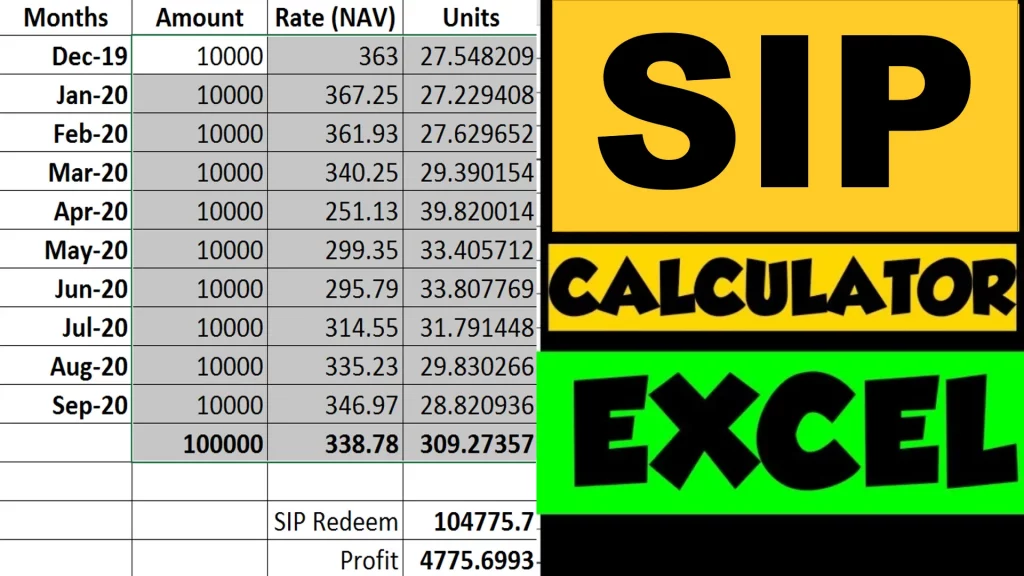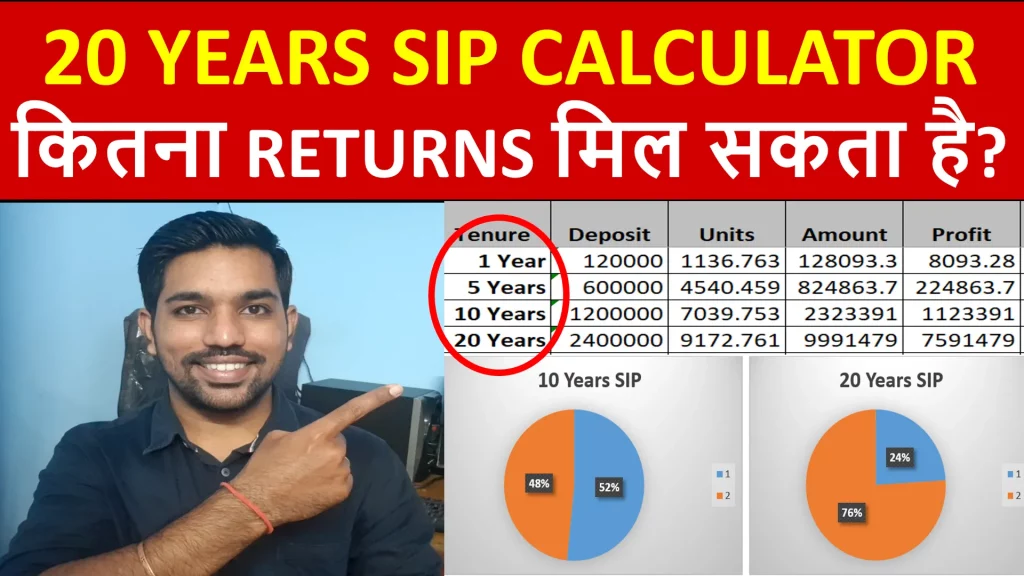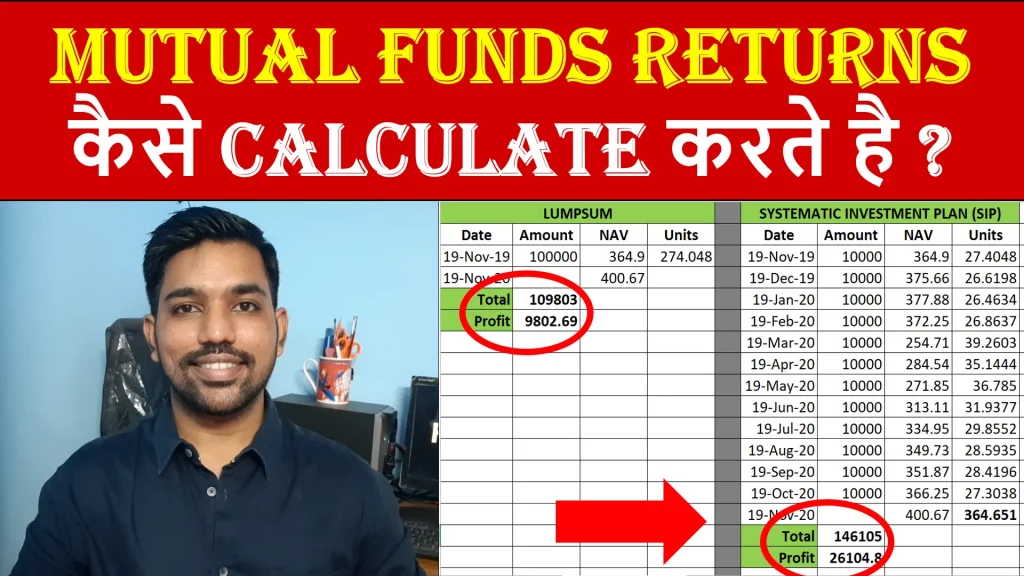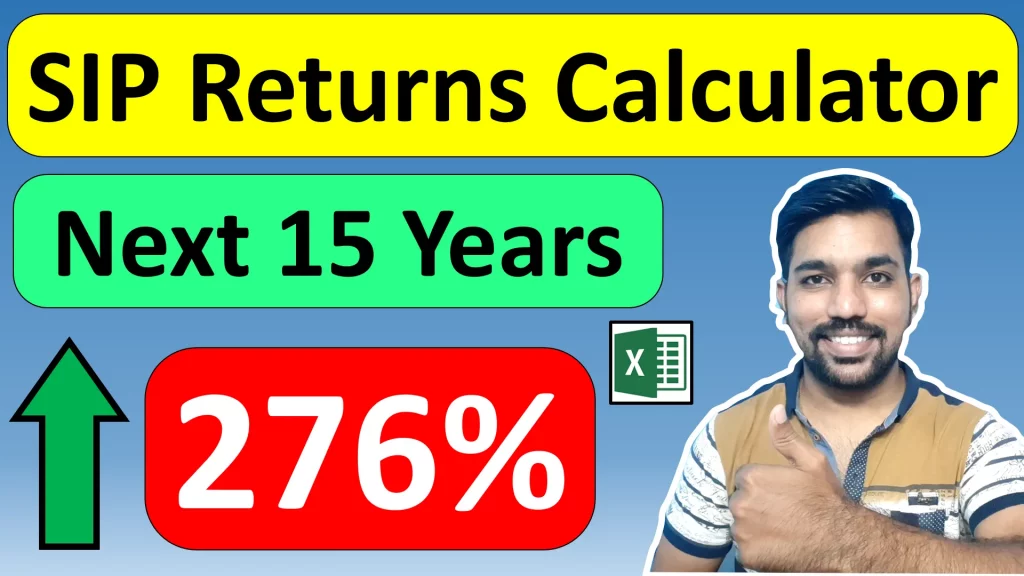NAV full form is Net Asset Value and in simple terms it is the price you pay to buy single unit of a mutual fund. Think of it as the “price tag” for each unit of the fund. It is calculated on daily basis when markets are open except for weekends and public holidays, with the help of the securities or underlying stocks in that mutual fund.
To calculate NAV, difference between total assets and total liabilities including expenses of stocks are found and then divided by total number of units in that mutual fund. Ideally you don’t have to worry about the calculation of NAV in mutual fund, as it is automatically done by the end of the day. The difference in NAV values on each day provides you the percentage of returns on specific day for that mutual fund.
Let us now understand more about NAV or Net Asset Value in more detail.
What is NAV in Mutual Fund?
- It is the price you pay to buy single unit of mutual fund
Use SIP Calculator to calculate expected returns in mutual fund via SIP:

How is NAV Calculated?
As mentioned above NAV is calculated based on the underlying stocks in that mutual fund.
All mutual funds compute the market value of securities that they hold after the end of the day. The liabilities and expenses are reduced from the total assets in all securities and divided by total number of units to find NAV value in mutual fund for that day. Below is the formula:
NAV (Net Asset Value) = Assets - (Liabilities + Expenses) / Number of unitsIn above formula, assets are cash and cash equivalents. Fund manager reduces the liabilities and other expenses required in managing the fund from the total assets and then divide the number by total outstanding number of units to get the value of NAV for that day.
You should not calculate NAV of every mutual fund based on above formula, since it is done by fund house themselves. Instead you should be focusing on the underlying stocks in the mutual fund and analyze them to select mutual funds to achieve your financial goals.
ALSO READ: SIP Returns Calculation using Excel
How to determine NAV while buying or selling mutual funds?
NAV or Net Asset Value is calculated on daily basis based on the underlying stocks in mutual funds. You need not have to calculate it by yourself, but it is calculated by fund house and is displayed on websites such as Moneycontrol, Valueresearch and many other finance sites for your analysis.
We should not consider the NAV of a particular mutual fund to decide whether we should be investing in the mutual fund or not.
There are many other factors like AUM (Assets under Management), expense ratio of mutual fund, experience of fund manager and underlying stocks in mutual fund portfolio that we must analyze to decide the mutual fund investments.
And we calculate the mutual fund units that we get based on the NAV value.
For example, if NAV of Mutual Fund is Rs. 20, and we invest Rs. 1000 in this mutual fund, then we use below formula to calculate number of units we get on this investment:
Number of Units = Amount / NAV = Rs. 1000 / 20 = 50 UnitsSo we get 50 units of this mutual fund which gets accumulated in our mutual fund account.
Watch below video to know Rs. 1000 Mutual Fund returns to know more about calculations with SIP in mutual fund.
Rs. 1000 Mutual Fund Returns Calculation Video

Watch more Videos on YouTube Channel
When Is NAV Updated?
- Updated by 9 PM IST on working days, as per SEBI guidelines.
Difference between NAV and Market Price
Now what is the difference between NAV and Market price?
NAV or Net Asset Value is associated with the cost of mutual fund, which contains list of stocks. Usually it represents price of single unit of mutual fund that we want to buy.
Where as, market price refers to the price of stock that we can buy directly via online brokers like zerodha and other securities platform, or is present as on of the stocks in mutual fund. So this market price refers to the price of one unit of stock of company / organization, that is being traded publicly on brokerage platforms.
ALSO READ: 4 Signs that You are Doing Well Financially
How Investment Timing affects NAV?
Basically, NAV value decreases when the market price of the underlying stock in that mutual fund decreases either due to bad performance or economic conditions. Where as, it increases with better performance of the stocks under mutual fund.
As far as investment timing is concerned, since NAV value is calculated on daily basis, if you invest in a mutual fund (other than liquid mutual fund or overnight mutual fund), the cut off time is 3:00 pm. So if you invest before 3:00 pm on a said day in a mutual fund, you’ll get the units based on the NAV of that day itself, provided the required funds are available for utilization.
If your investment time is after 3:00 pm, than the NAV of next business day will be applicable for number of units calculation.
It is important to note that the funds must be available for utilization, even when you have invested before 3:00 pm to get the same day NAV value. Sometimes, the time required to transfer amount from your account to AMC account is also delayed. So the time that the AMC receives your amount will be considered and will decide whether you’ll get same day NAV or next business day’s NAV.
For Liquid and overnight mutual funds, the cut off time is 1:30 pm for buying mutual funds.
In case of selling of mutual funds, the cut off time is 3:00 pm for all mutual funds, to get same day NAV, and if you apply for redemption after 3:00 pm, you’ll get the NAV for next business day for all mutual funds.
ALSO READ: What is Equity Mutual Funds, Features and Benefits
How to get same day NAV in mutual fund
You can get same day NAV by investing in mutual fund before cut off time – 3:00 pm, and the funds must be available for utilizations.
If you invest after 3:00 pm, the next business day NAV will be applicable while calculating the number of mutual fund units.
For liquid and overnight mutual funds, the cut off time applicable is 1:30 pm for buying.
In case of selling mutual fund units, cut off time is 3:00 pm for all mutual funds.
Conclusion
So these are some important factors you should know about NAV or Net Asset value of mutual fund. You should not consider whether mutual fund NAV value is low or high while buying mutual funds, but you should be analyzing the other factors like underlying stocks in mutual fund portfolio, experience of fund manager, total AUM, expense ratio, etc.
NAV is calculated on daily basis after removing liabilities and expenses from total assets in mutual fund portfolio and then dividing it by total outstanding number of units.
Some more Reading:
- What is ELSS Mutual Fund to save income tax
- Difference between open ended and closed ended mutual funds
- What is Fixed Maturity Plan Mutual Fund
Frequently Asked Questions
What is NAV in mutual funds?
NAV stands for Net Asset Value. It’s the per-unit price of a mutual fund, calculated daily.
Does a higher NAV mean better performance?
No. NAV reflects current value, not performance. Focus on returns, not NAV.
How much NAV is good in mutual fund?
Mutual fund cannot be analyzed just by knowing the NAV value. It is just the reflection of underlying stocks after removing the total liabilities and expenses from total assets and dividing it by number of units. Mutual fund with high value can out perform mutual fund with less value and vice versa, based on the performance of the stocks present in mutual fund portfolio. So there is no such good NAV when selecting mutual fund!
Is higher NAV better or lower?
It should not matter whether the NAV value is high or low, you should consider other factors like stocks in the mutual fund portfolio, AUM, expense ratio, experience of the fund manager, etc. while selecting mutual funds.
What is SIP and NAV?
SIP is a way to invest in mutual funds, where you invest in it every month with the amount that is pre decided by you. Where as NAV or Net Asset Value is the price of single unit of mutual fund that is used to calculate number of units you accumulate when you invest in mutual funds.
Is NAV calculated daily?
Yes NAV of mutual fund is calculated on daily basis on every business day, by reducing liabilities and expenses from total assets and dividing it by number of units.
Save Home Loan Interest Amount!
Use Home Loan Excel Calculator that will help you to Save Interest Amount on Home Loan EMI.
Click below button to download Home Loan EMI and Prepayment Calculator in Excel:
Watch how Home Loan Calculator in Excel Works
Income Tax Calculator App – FinCalC
For Income Tax Calculation on your mobile device, you can Download my Android App “FinCalC” which I have developed for you to make your income tax calculation easy.
What you can do with this mobile App?
- Calculate Income Tax for FY 2025-26 and previous FY 2024-25
- Enter estimated Investments to check income tax with Old and New Tax Regime
- Save income tax details and track regularly
- Know how much to invest more to save income tax
- More calculators including PPF, SIP returns, Savings account interest and lot more

Use Popular Calculators:
- Income Tax Calculator
- Home Loan EMI Calculator
- SIP Calculator
- PPF Calculator
- HRA Calculator
- Step up SIP Calculator
- Savings Account Interest Calculator
- Lump sum Calculator
- FD Calculator
- RD Calculator
- Car Loan EMI Calculator
- Bike Loan EMI Calculator
- Sukanya Samriddhi Calculator
- Provident Fund Calculator
- Senior Citizen Savings Calculator
- NSC Calculator
- Monthly Income Scheme Calculator
- Mahila Samman Savings Calculator
- Systematic Withdrawal Calculator
- CAGR Calculator
I’d love to hear from you if you have any queries about Personal Finance and Money Management.
JOIN Telegram Group and stay updated with latest Personal Finance News and Topics.
Download our Free Android App – FinCalC to Calculate Income Tax and Interest on various small Saving Schemes in India including PPF, NSC, SIP and lot more.
Follow the Blog and Subscribe to YouTube Channel to stay updated about Personal Finance and Money Management topics.





